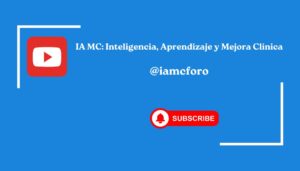Patient safety perception: the name can be the same, but I,m different and my problem too
Patient safety perception: the name can be the same, but I,m different and my problem too

Cataracts. A common problems in ophtalmology. Ninety nine percent of patients are treated with surgery in a short intervention. A problem usually of an old age, but not always.
This is the case in a group of people with a particular syndrome, the pseudoexfoliation syndrome. Pseudoexfoliation syndrome (PXF or PEX) is an age-related systemic syndrome that targets mainly ocular tissues through the gradual deposition of fibrillary white flaky material from the lens, mainly on the lens capsule, ciliary body, zonules, corneal endothelium, iris and pupillary margin,
The surgery of a cataract in a patient with this diagnosis must take in consideration the weakness of the ligaments of the zonulas with the possibility of a bad outcome.
Controlling the risk: Is aviation industry a model for Medicine?
Aviation industry and medical practice have been a subject of comparison in the last forty years. Both activities share the possibility of dangerous or risky situations with a definitive impact in people life. Although the comparison seems very plausible to the public, the truth is that the differences are also important among these two work environments. The question is: how and what can be learned from differences more than similarities?
Safety is a central issue in the Aviation Industry, not yet in Medicine
While safety in aviation is a central objective with very well developed protocols and rules, the situation in Medicine is still quite different. Nowadays, safety has gained consideration in the fields of surgery, anesthesia and medication, but it is not a main issue until now in the field of clinical practice and,in general, it is not common to see an organized analysis of adverse events in the complex clinical scenario . We are not talking, of course, about clinical sessions or a discussion about the benefit of a new treatment or a new diagnostic tool, but about the lack of a regulated and continuous activity of analysis of problems and indications of improvement with a direct impact on the clinical outcome.
Teaching clinical safety in Medicine is a “Holy Grial”
Books, Conferences, Journals and hundreds of papers are devoted to the world of Patient Safety, but this is not yet a subject in Medical Schools. The World Health Organization (WHO) has developed guidelines in patient safety to be incorporated into the curriculum in medical schools , but the main problem is how and when to teach this subject outside of the clinical environment.
Teaching patient safety must be integrated early into the medical curriculum as a “transversal” activity, with a lot of practical examples based on the real clinical practice. The difference between this topic and, for instance, anatomy is that the teaching has to be seen by the students as a fresh and interesting way to learn the bases of an excellent clinical practice, and not like another topic to be memorized, but a permanent attitude for the rest of their clinical life.
Patients need more information
Many institutions in the world are excellent in the field of Patient Safety, usually in the United States or Europe, but if we think globally with the amount of places, interventions, clinical encounters, around the world, probably we can be surprised by the lack of a real appreciation of safety into the burden of patients treated yearly under the rules of the modern clinical practice.
The aviation industry,at least, has a public “ranking” of accidents, the rules followed by each company, training courses in safety, but to know the real situation in Health Centers and Hospitals around the world is really difficult. The patient safety issue is seen more like a problem of management or clinical administration that like a subject of clinical responsibility.
The perception of safety: the important question
When you need to buy a flight ticket, what are the key elements to decide between one company or the other? Maybe the first element could be the price , but after considering similar prices, the most important thing is the feeling of “safety appreciation”, based on the name of the company, the country where is located, and the free access to the history of accidents.
When we have to go to a hospital for a diagnosis or for a surgical intervention, the most important value is the sensation of control around all the processes implicated in our diagnosis or treatment.
Several characteristics can be enumerated that can give a patient an appreciation of clinical safety:
- The knowledge that the Institution have a program of clinical safety
- To speak to the doctor and the team before the intervention
- To be sure that your personal peculiarities are taking account, and the procedure is going to be adapted to your personal characteristics
- To be sure that your doctor have experience in your particular problem
- To know that your doctors and nurses have developed, in advance, safety measure in case that your intervention can go in an unexpected direction
- At the end , as a patient, you need to be sure that your medical problem and your personal characteristics have been honestly attended and that your specific medical condition are going to be treated adapted to the proper level of risk.
Author: Lorenzo Alonso, MD



